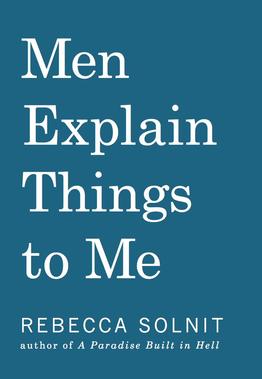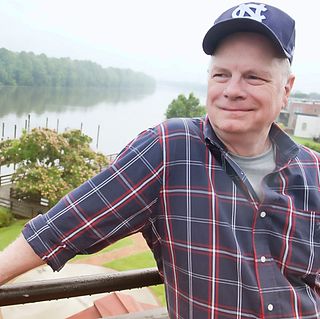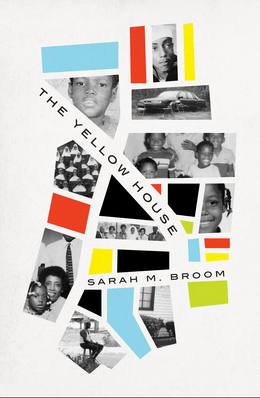
An environmental disaster or ecological disaster is defined as a catastrophic event regarding the natural environment that is due to human activity. This point distinguishes environmental disasters from other disturbances such as natural disasters and intentional acts of war such as nuclear bombings.

An emergency shelter is a place for people to live temporarily when they cannot live in their previous residence, similar to homeless shelters. The main difference is that an emergency shelter typically specializes in people fleeing a specific type of situation, such as natural or man-made disasters, domestic violence, or victims of sexual abuse. A more minor difference is that people staying in emergency shelters are more likely to stay all day, except for work, school, or errands, while homeless shelters usually expect people to stay elsewhere during the day, returning only to sleep or eat. Emergency shelters sometimes facilitate support groups, and/or provide meals.

Sociology of disaster or sociological disaster research is a sub-field of sociology that explores the social relations amongst both natural and human-made disasters. Its scope includes local, national, and global disasters - highlighting these as distinct events that are connected by people through created displacement, trauma, and loss. These connections, whether that is as a survivor, working in disaster management, or as a perpetrator role, is non-discrete and a complex experience that is sought to be understood through this sub-field. Interdisciplinary in nature, the field is closely linked with environmental sociology and sociocultural anthropology.

Hurricane Katrina was a devastating Category 5 Atlantic hurricane that resulted in 1,836 fatalities and caused damage estimated between $97.4 billion to $145.5 billion in late August 2005, particularly in the city of New Orleans and its surrounding areas. At the time, it was the costliest tropical cyclone on record, tied now with Hurricane Harvey of 2017. Katrina was the twelfth tropical cyclone, the fifth hurricane, and the third major hurricane of the 2005 Atlantic hurricane season. It was also the fourth-most intense Atlantic hurricane on record that made landfall in the contiguous United States by barometric pressure.

As the center of Hurricane Katrina passed southeast of New Orleans on August 29, 2005, winds downtown were in the Category 1 range with frequent intense gusts. The storm surge caused approximately 23 breaches in the drainage canal and navigational canal levees and flood walls. As mandated in the Flood Control Act of 1965, responsibility for the design and construction of the city's levees belongs to the United States Army Corps of Engineers and responsibility for their maintenance belongs to the Orleans Levee Board. The failures of levees and flood walls during Katrina are considered by experts to be the worst engineering disaster in the history of the United States. By August 31, 2005, 80% of New Orleans was flooded, with some parts under 15 feet (4.6 m) of water. The famous French Quarter and Garden District escaped flooding because those areas are above sea level. The major breaches included the 17th Street Canal levee, the Industrial Canal levee, and the London Avenue Canal flood wall. These breaches caused the majority of the flooding, according to a June 2007 report by the American Society of Civil Engineers. The flood disaster halted oil production and refining which increased oil prices worldwide.
Hurricane Katrina had many social effects, due the significant loss and disruption of lives it caused. The number of fatalities, direct and indirect, related to Katrina is 1,833 and over 400,000 people were left homeless. The hurricane left hundreds of thousands of people without access to their homes or jobs, it separated people from relatives, and caused both physical and mental distress on those who suffered through the storm and its aftermath, such as Post-traumatic stress disorder (PTSD).

In September 2005, units of the Mexican Armed Forces responded to the emergency situations after Hurricane Katrina with aid and assistance, appearing as a flagged, uniformed force in the United States for the first time since World War II in the 1940s and the first operational deployment of Mexican troops to the U.S. in 159 years.

A disaster medical assistance team (DMAT) is a group of professional medical personnel organized to provide rapid-response medical care or casualty decontamination during a terrorist attack, natural disaster, or other incident in the United States.
In organization theory, mutual aid is a voluntary reciprocal exchange of resources and services for mutual benefit. Mutual aid projects can be a form of political participation in which people take responsibility for caring for one another and changing political conditions.

Rebecca Solnit is an American writer. She has written on a variety of subjects, including feminism, the environment, politics, place, and art.

William Craig Fugate is the former administrator of the Federal Emergency Management Agency. As director for the Florida Emergency Management Division, he oversaw the "Big 4 of '04" and as the administrator for the Federal Emergency Management Agency, he organized recovery efforts for a record of eighty-seven disasters in 2011.

Ginger Strand is an American author of nonfiction and fiction. Her 2005 debut novel Flight was adapted from several of her short stories. Her published books of non-fiction include Inventing Niagara: Beauty, Power, and Lies in May 2008, Killer on the Road: Violence and the American Interstate in 2012, and The Brothers Vonnegut: Science and Fiction in the House of Magic in 2015. She has published articles in The New Yorker, The New York Times,Pacific Standard,Tin House, and The Believer, among others. She was a 2009 New York Foundation for the Arts fellow in nonfiction.

Mansplaining is a pejorative term meaning "(for a man) to comment on or explain something, to a woman, in a condescending, overconfident, and often inaccurate or oversimplified manner". Author Rebecca Solnit ascribed the phenomenon to a combination of "overconfidence and cluelessness". Lily Rothman, of The Atlantic, defined it as "explaining without regard to the fact that the explainee knows more than the explainer, often done by a man to a woman".

Five Days at Memorial: Life and Death in a Storm-Ravaged Hospital is a 2013 non-fiction book by the American journalist Sheri Fink. The book details the aftermath of Hurricane Katrina at Memorial Medical Center in New Orleans in August 2005, and is an expansion of a Pulitzer Prize-winning article written by Fink and published in The New York Times Magazine in 2009. It describes the events that took place at Memorial Medical Center over five days as thousands of people were trapped in the hospital without power. The triage system put into effect deprioritized critically ill patients for evacuation, and it was later alleged that a number of these patients were euthanized by medical and nursing staff shortly before the entire hospital was evacuated on the fifth day of the crisis. Fink examines the legal and political consequences of the decision to euthanize patients and the ethical issues surrounding euthanasia and health care in disaster scenarios. The book was well received by most critics and won three awards, including a National Book Critics Circle Award for non-fiction.

Men Explain Things to Me is a 2014 essay collection by the American writer Rebecca Solnit, published by Haymarket Books. The book originally contained seven essays, the main essay of which was cited in The New Republic as the piece that "launched the term mansplaining", though Solnit herself did not use the word in the original essay and has since rejected the term. The September 2015 expanded edition of the book included two new essays: "Cassandra Among the Creeps" and "#YesAllWomen: Feminists Rewrite the Story."

River of Shadows: Eadweard Muybridge and the Technological Wild West is a 2003 book by American writer Rebecca Solnit, published by Viking; in the United Kingdom it was published by Bloomsbury as Motion Studies: Time, Space and Eadweard Muybridge. The book is a biographical portrait of photographer and inventor Eadweard Muybridge, a history of the development of technological change in the West during the later half of the nineteenth century that led to development of the modern film industry in Hollywood and later the information technology industry in Silicon Valley, and an essay focusing on a series of connections between Muybridge's life and the changing human landscape of the American West.

Willie Drye is an American journalist and an author. He has published three nonfiction books, and is a contributing editor for National Geographic News. His work has appeared in The Washington Post, The Globe and Mail of Toronto, and other national and regional publications.
The study of howhumans respond to disasters is a phenomenon one can study by examining diverse source documents created and preserved throughout human history thus far. In ancient times, disasters were seen through the lens of supernormal explanations.

The Yellow House is a memoir by Sarah M. Broom. It is Broom's first book and it was published on August 13, 2019 by Grove Press. The Yellow House chronicles Broom's family, her life growing up in New Orleans East, and the eventual demise of her beloved childhood home after Hurricane Katrina. Broom also focuses on the aftermath of Katrina and how the disaster altered her family and her neighborhood. At its core, the book examines race, class, politics, family, trauma, and inequality in New Orleans and America. The Yellow House won the 2019 National Book Award for Nonfiction.
"Elite panic" is a term coined by Rutgers University researchers Caron Chess and Lee Clarke to describe the behavior of members of the elite during disaster events, typically characterized by a fear of civil disorder and the shifting of focus away from disaster relief towards implementing measures of "command and control".
















